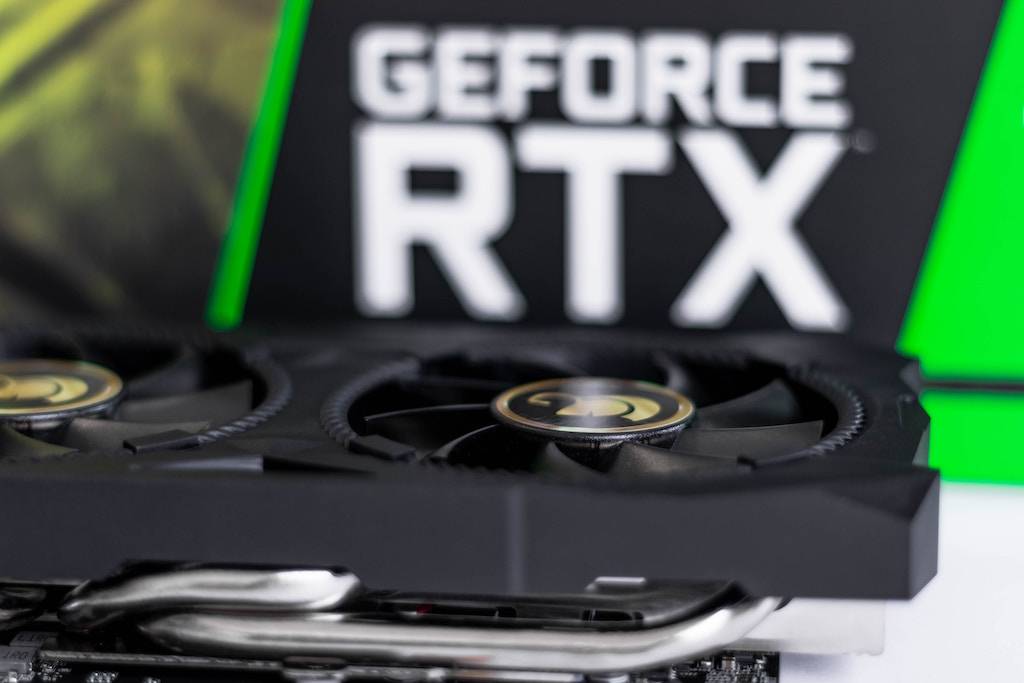Embarking on a swirling journey into the world of semiconductors, our narrative centers around Nvidia, a company exuding dominance in the design of graphics processing units, better known as GPUs. GPUs—machines known for their indispensability across a broad spectrum of applications, including gaming, artificial intelligence, and data center computing. Nvidia’s monetary standing has been climbing the metaphorical market mountain at a breakneck pace, owing to the strong growth experienced by the semiconductor industry, compounded with the ever-climbing demand for Nvidia’s signature creations.Transport your thoughts back to 1993. The U.S. was surfacing as the unrivalled pioneer of the burgeoning digital epoch, and Silicon Valley was a hotbed of ambition and inventive prowess. Amid this technological golden age, a triumvirate of ambitious electrical engineers, Jensen Huang, Chris Malachowsky, and Curtis Priem, bound by a collective vision, planted the seed for what would burgeon into the globally acclaimed tech titan: Nvidia.
In its embryonic phase, Nvidia was merely a fledgling amidst a flock, daring to traverse the intricately complex and fiercely combative terrain of semiconductor technology. Its founders, seasoned warriors from notable tech citadels such as Sun Microsystems and AMD, pinpointed an uncharted territory in the market — graphics processing units (GPUs) custom-built for the gaming arena. They noticed how software was starting to outstrip hardware in complexity and performance requirements, birthing a unique niche for a firm specializing in GPU technology.
The defining watershed moment for Nvidia came in 1999 with the launch of the GeForce 256, the world’s premier GPU. This monumental invention, capable of handling 10 million polygons per second, was a game-changer in computer graphics, establishing a fresh standard for visual computing. This technological wonder not only propelled Nvidia to the industry’s apex but also reshaped the gaming topography.
Yet, the company’s trailblazing spirit didn’t end there. In 2006, Nvidia made another game-changing stride with the introduction of CUDA, a parallel computing platform and application programming interface that permitted software developers to utilize Nvidia GPUs for general-purpose processing. This revolutionary leap allowed GPUs to cross the boundary of graphics, enabling strides in scientific computing, machine learning, and artificial intelligence.
In spite of grappling with formidable rivals like Intel and AMD, Nvidia’s steadfast devotion to innovation and its strategic foray into high-growth markets cemented its position as an industry champion. Over the years, Nvidia continued to widen its horizon, penetrating areas like automotive technology and data centers, relentlessly pushing the envelope of GPU technology’s potential.
Today, Nvidia towers as a colossus in the semiconductor industry, acclaimed for its state-of-the-art GPUs and AI technology. With a market capitalization soaring into several hundreds of billions, the company’s growth narrative has been nothing short of astronomic. Even though Nvidia has weathered its share of storms — like antitrust concerns and the tidal movements of the global economy — its persistent zeal for innovation and robust leadership have enabled it to steer through these challenges and continue its upward trajectory.
The Nvidia saga is a tribute to the potency of innovation, strategic market placement, and visionary leadership. From its modest genesis as a Silicon Valley startup to its present stature as a global tech Goliath, Nvidia has etched a distinctive mark in the chronicles of technological history. Its journey imparts priceless insights on adaptation, resilience, and the relentless chase of excellence.
As we shift our focus to the present and future, let’s plunge into a more contemporaneous analysis of Nvidia’s financial status. Today, Nvidia stands as an authoritative figure in the realm of graphics processing unit design, known more commonly as GPUs…
With time creeping towards August 2, 2023, our eyes linger on Nvidia’s fiscal report for the second quarter of 2024, looming in the near future. Analysts scurrying across the market landscape are placing their bets on a revenue of $8.10 billion, and earnings per share sitting prettily at $1.30. They’re singing songs of growth—43% and 73% year-on-year, respectively.
Driving the surge of Nvidia’s growth predictions are the sturdy demand for its creations—GPUs for gaming and AI, standing tall. Adding to the anticipation is the debut of the new Ada Lovelace GPU architecture—a dazzling, game-changing product that’s expected to outshine its Turing predecessor with significant performance enhancements.
A curious paradox coloring Nvidia’s success story is the current chip shortage—an industry-wide challenge, which for Nvidia, has spun into an opportunity, enabling it to command higher prices for its prized products.
Moving our attention to the press commentary:
Seeking Alpha strikes a cautionary note—considering Nvidia’s stock as “too hot,” warning investors of possible burns. They point to the steep valuation of the stock and potential growth deceleration in the semiconductor industry as reasons for this stance.
The Fool counters with a more sunny outlook—seeing Nvidia’s stock as undervalued, brimming with the potential to unlock significant future gains. Factors such as Nvidia’s robust growth potential and industry leadership bolster their argument.
TipRanks treads a middle ground, positing a balanced view of Nvidia’s stock. High product demand and the potential Arm acquisition are hailed as possible boosters, while the chip shortage and global economic slowdown could temper enthusiasm.
Yahoo Finance strikes a note of caution—raising the specter of Nvidia’s exposure to the pressured Nasdaq Composite Index, alongside a potential semiconductor industry growth slowdown as potential risk factors for Nvidia’s stock.
In this diverse choir of perspectives, Nvidia’s stock story oscillates between optimism and caution. Several factors could sway its trajectory. Investing, thus, is a game of careful deliberation.
Post the May 24 results, here are a few considerations that could influence Nvidia’s stock price:
Revenue and earnings growth of the company
The pulse of the semiconductor industry
The thirst for Nvidia’s products
The landscape of competition
The global economic climate
As time unfurls, investors are encouraged to keep these factors under their lens. It’s through such vigilant observation that one can anticipate the potential impact on Nvidia’s stock price.
In light of the narrative we have woven, the story of Nvidia exemplifies the robust power of innovation, steadfast determination, and strategic market acumen. From the birth of a daring idea in the minds of three ambitious electrical engineers, to the transformation of this idea into a tech titan known globally for its contribution to the world of technology, Nvidia stands as an emblem of success and resilience.
The journey of Nvidia since its inception in 1993 to the present day has been marked by several turning points, each carving a distinctive notch in the company’s timeline. The advent of the GeForce 256 in 1999 heralded Nvidia’s grand entrance into the GPU arena, forever transforming the tableau of computer graphics. Later, in 2006, through the unveiling of CUDA, Nvidia showcased its ability to push the envelope, extending the purview of its products to encompass realms such as scientific computing, machine learning, and artificial intelligence.
Yet, it was not just Nvidia’s innovative prowess that fueled its journey. The company also demonstrated strategic acumen in identifying and tapping into high-growth markets. Its expansion into automotive technology and data centers offered new vistas of opportunities, opening new revenue streams and strengthening its foothold in the industry. Through these strategic moves, Nvidia showed its capability to adapt and evolve, staying relevant amidst rapidly changing market dynamics and stiff competition.
Today, as Nvidia stands as a colossus in the semiconductor industry, its journey offers a wealth of lessons for other tech companies and investors. Its ability to navigate through various challenges, including antitrust concerns and the fluctuations of the global economy, underscores the importance of robust leadership and a steadfast commitment to innovation.
As we stare into the vortex of the future, with Nvidia’s second-quarter 2024 fiscal report looming, the company finds itself at an intriguing crossroads. With the backdrop of a robust semiconductor industry and high demand for Nvidia’s products, there is tangible optimism for strong growth. At the same time, the debut of the Ada Lovelace GPU architecture offers a fresh burst of potential.
However, the journey forward is not devoid of uncertainties. Factors like the global chip shortage and economic slowdown cast their shadows over the company’s prospects. The diverse commentary from the press reflects these uncertainties, with views oscillating between optimism and caution.
In the realm of investing, such uncertainties demand careful deliberation. The future path of Nvidia’s shares will likely pivot on an array of variables – the firm’s momentum in revenue and earnings, the heartbeat of the semiconductor sector, appetite for Nvidia’s offerings, competitive terrain, and the overarching global economic weather.
To the discerning investor, the story of Nvidia thus offers a rich tapestry of insights. It serves as a reminder of the complex interplay of innovation, market strategy, and external market conditions in shaping a company’s journey. It underscores the value of vigilance and prudence in investment decisions, of balancing optimism with caution, and of considering multiple factors in assessing a company’s future prospects.
As the narrative of Nvidia continues to unfold, it promises to add more chapters to its already rich story. Be it through new product launches, strategic acquisitions, or responses to global market challenges, the company is likely to continue pushing the boundaries of the technology frontier. For the investors, the industry, and the consumers, the tale of Nvidia remains a gripping saga of technological prowess and market strategy, one that promises to continue shaping the contours of the tech world in the years to come.

